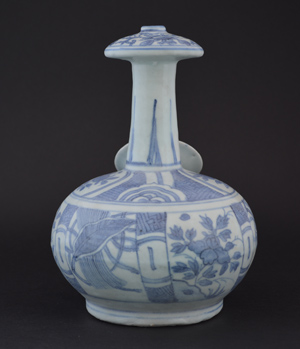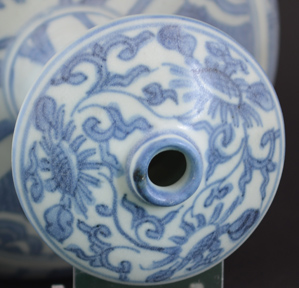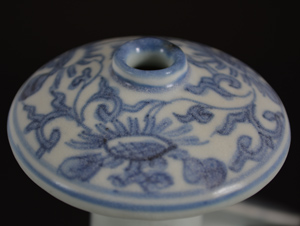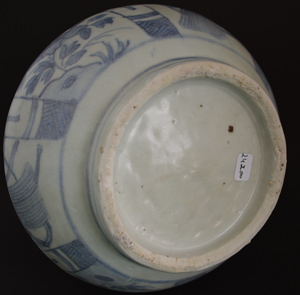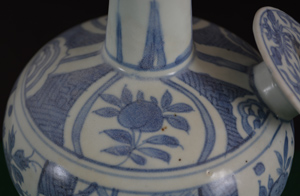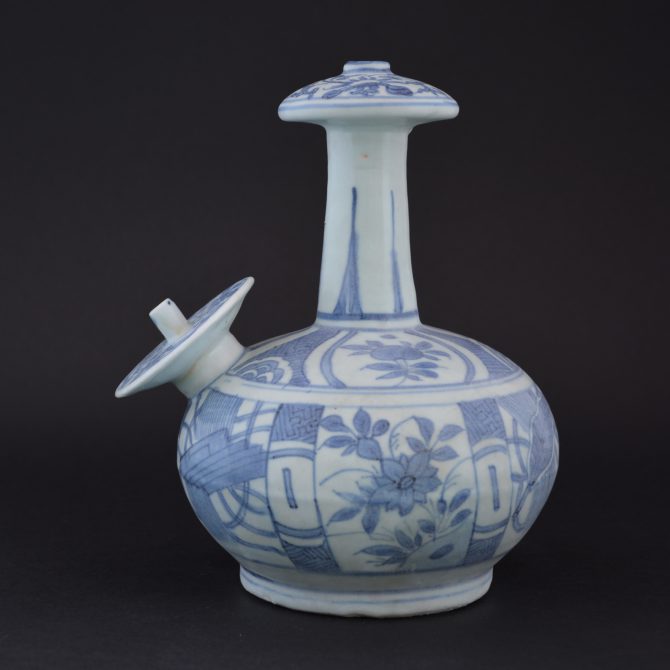
HATCHER CARGO c.1643 Transitional Porcelain
A Blue and White Transitional Porcelain Kraakware Kendi from the Hatcher Cargo c.1643, Late Ming or Early Qing, Chongzhen 1628-1644 or Shunzhi 1644-1661.
SOLD
- Condition
- In good condition but with a small shallow chip to the underside of the wide flange. The glaze has some degradation to prolonged immersion in salt water.
- Size
- Hight : 20 cm (8 inches)
- Provenance
- N/A
- Stock number
- 24200
Information
The Hatcher Cargo :
The Hatcher Cargo was the first porcelain cargo from a shipwreck to come on to the market. It was sold in several auctions in Christie`s Amsterdam in 1984 and 1985. It remains one of the most important cargoes of shipwreck ceramics ever recovered, despite the lack of historical evidence recorded by the salvage team. Two porcelain covers dated 1643 helped date the wreck but this needed corroborating to give a firm date of the wreck and it`s cargo. The dating of the porcelain from the Hatcher Cargo is based on several elements. Firstly, the ceramics recovered form a coherent group, in other words they appear to all have been made at the same time. Secondly comparative dating was used to corroborate the date of the porcelain. For example, blue and white porcelain dishes decorated with a coiled serpent recovered from the Hatcher Cargo match an important dish from the fall of the Ming dynasty, formerly in the Percival David Foundation, now at the British Museum London, this dish can be dated to 1644 - 1645. Other comparative dating is also consistent with the presumed date of the porcelain. However, the most important dating reference remains the two covers recovered from the wreck datable by inscription to the spring of 1643. Although the the Ming dynasty officially ended in 1644 the transition from the Ming to the beginning of the Qing was messy and protracted. The porcelain made during this period of civil war and chaos is referred to as `Transitional Porcelain`. It covers the period from the last Ming Emperors until the early years of the Kangxi period, which is normally given a date of about 1620 to 1670 . The Hatcher Cargo is a vital dating tool for this previously poorly understood period of Chinese porcelain production.
Kendi :
The kendi is defined as a vessel with a round body, tall neck, mouth, a spout on the shoulder and a flat base. The two openings make the kendi suitable for both pouring and drinking liquids. It is distinguished from other pouring vessels such as a jug or flagon by the absence of a handle. The presence of a spout on the shoulder places it in the broader typology of a spouted vessel. To drink from a kendi, grasp the neck with one hand ; place the other on the base for support if desired, hold the vessel away from the body, point the spout towards the mouth and slowly tilt it to start the water flowing. As the lips never touch the spout, the kendi is a hygienic and convenient communal drinking vessel.
